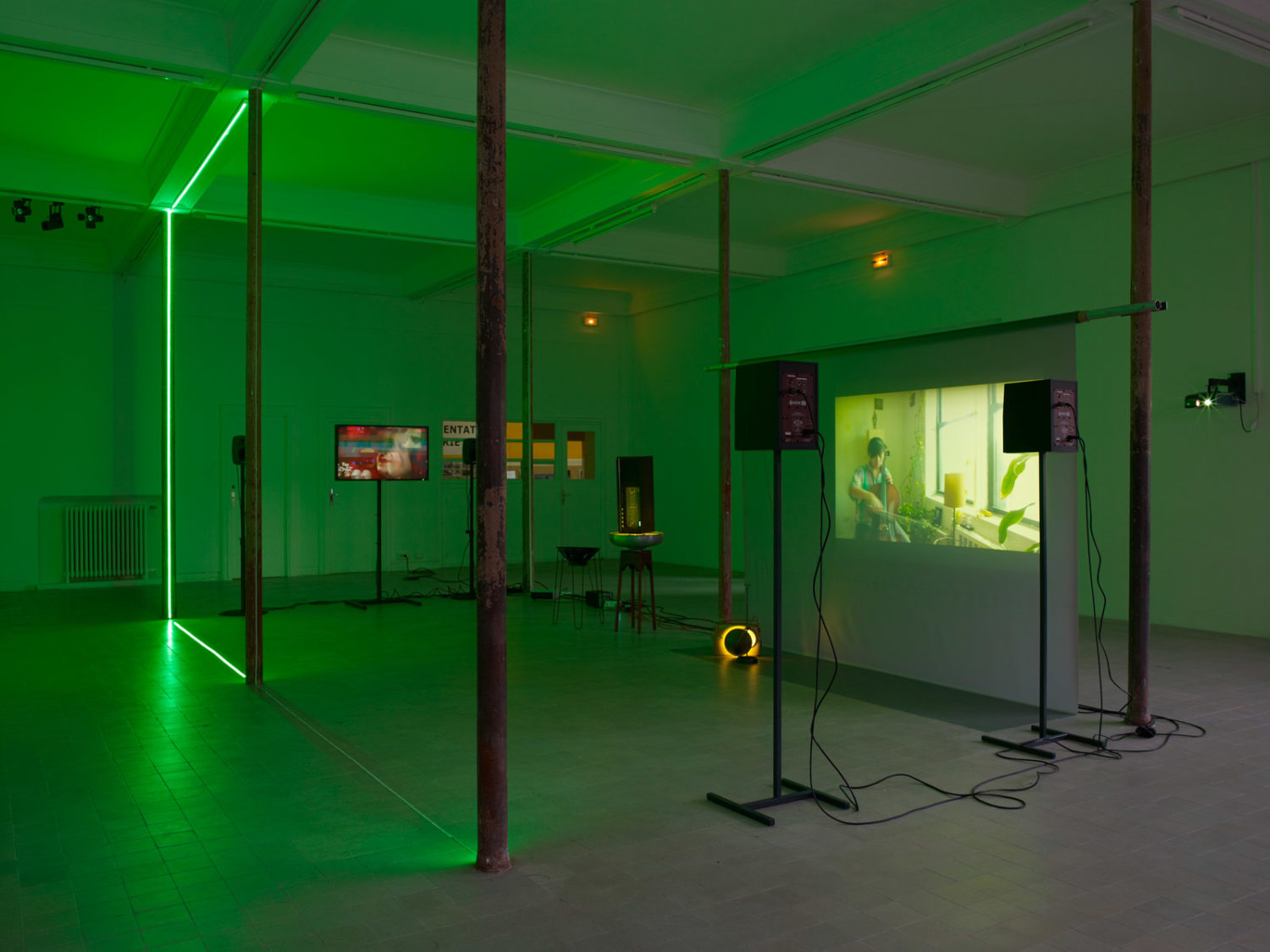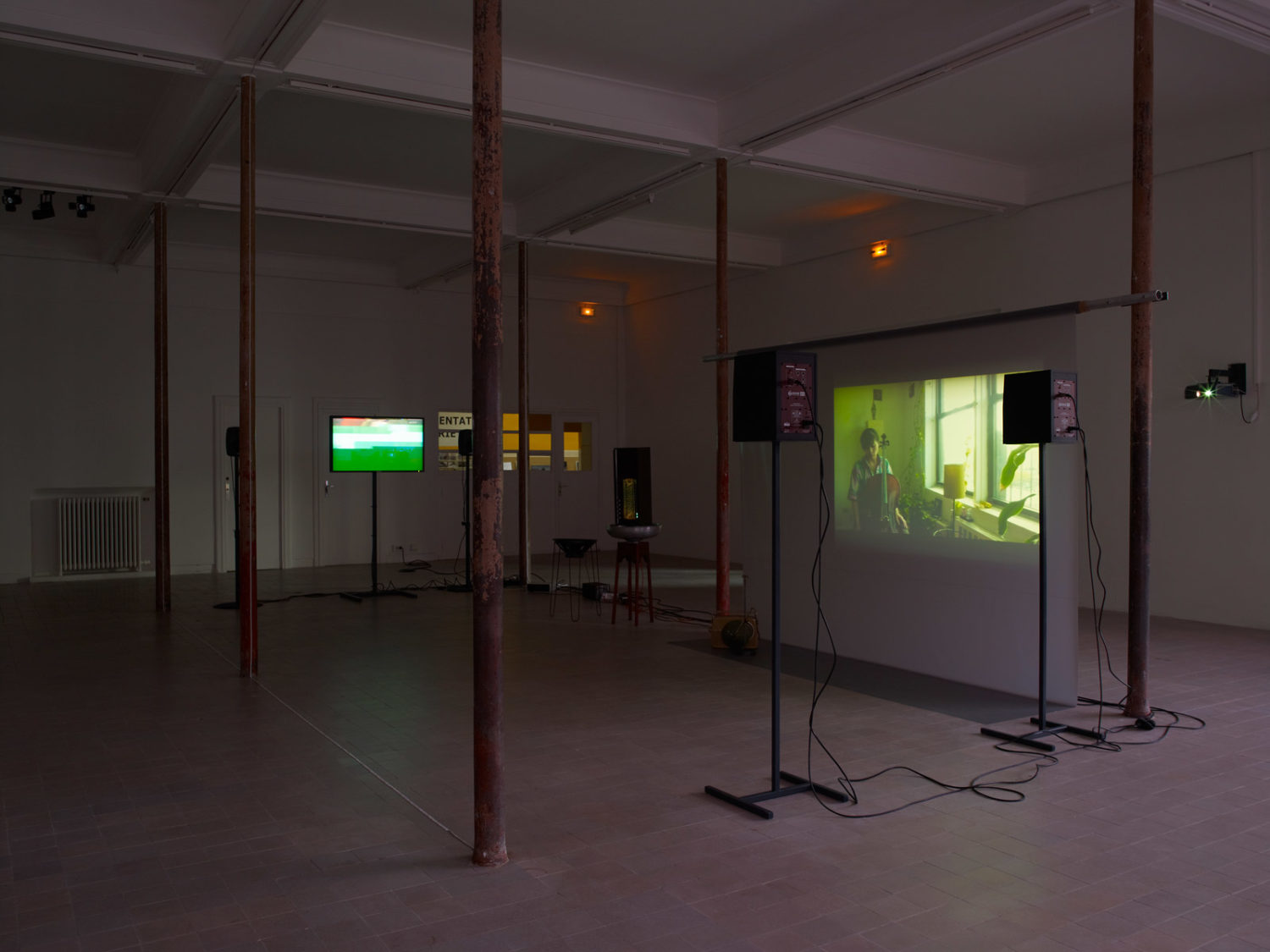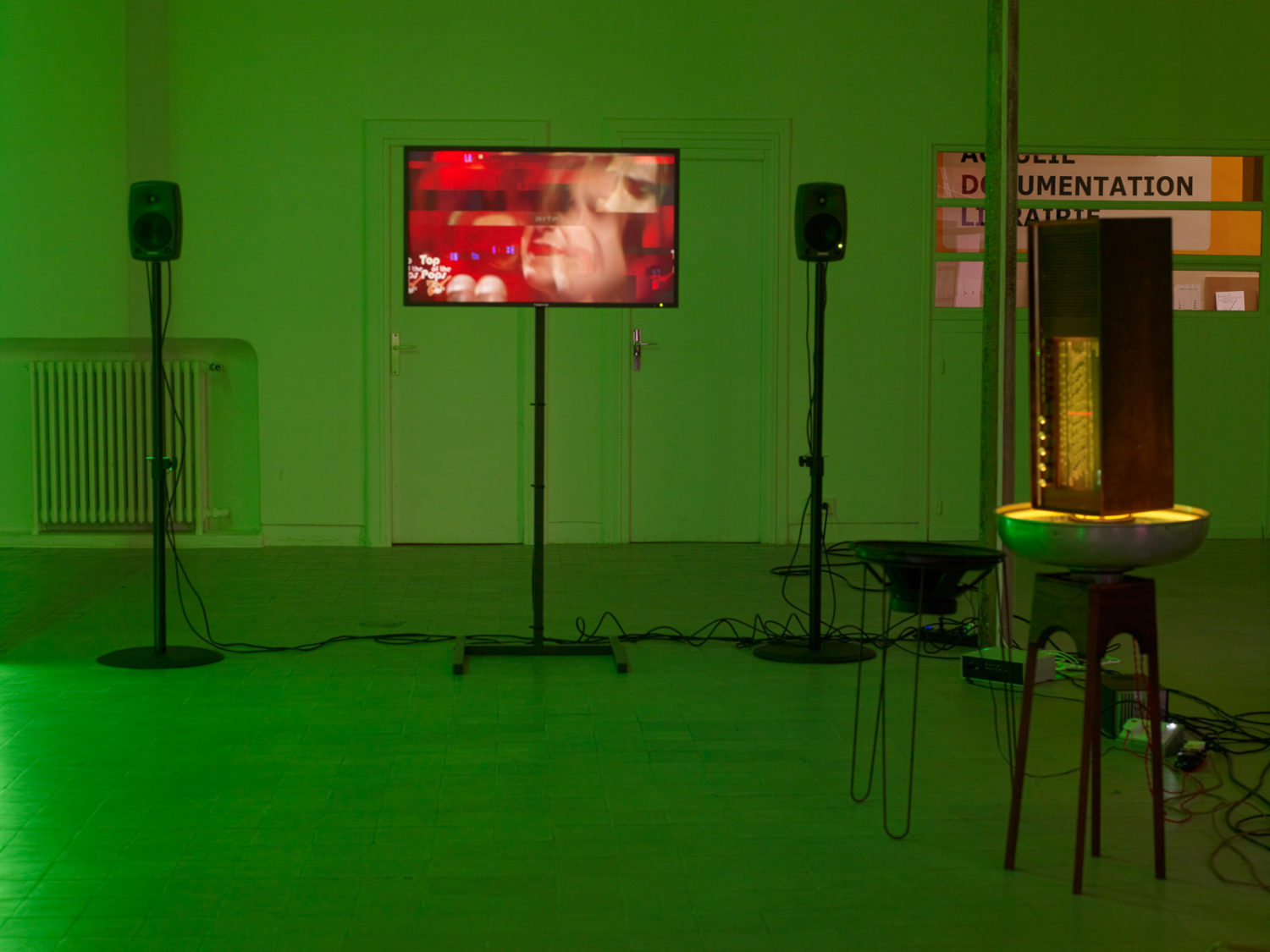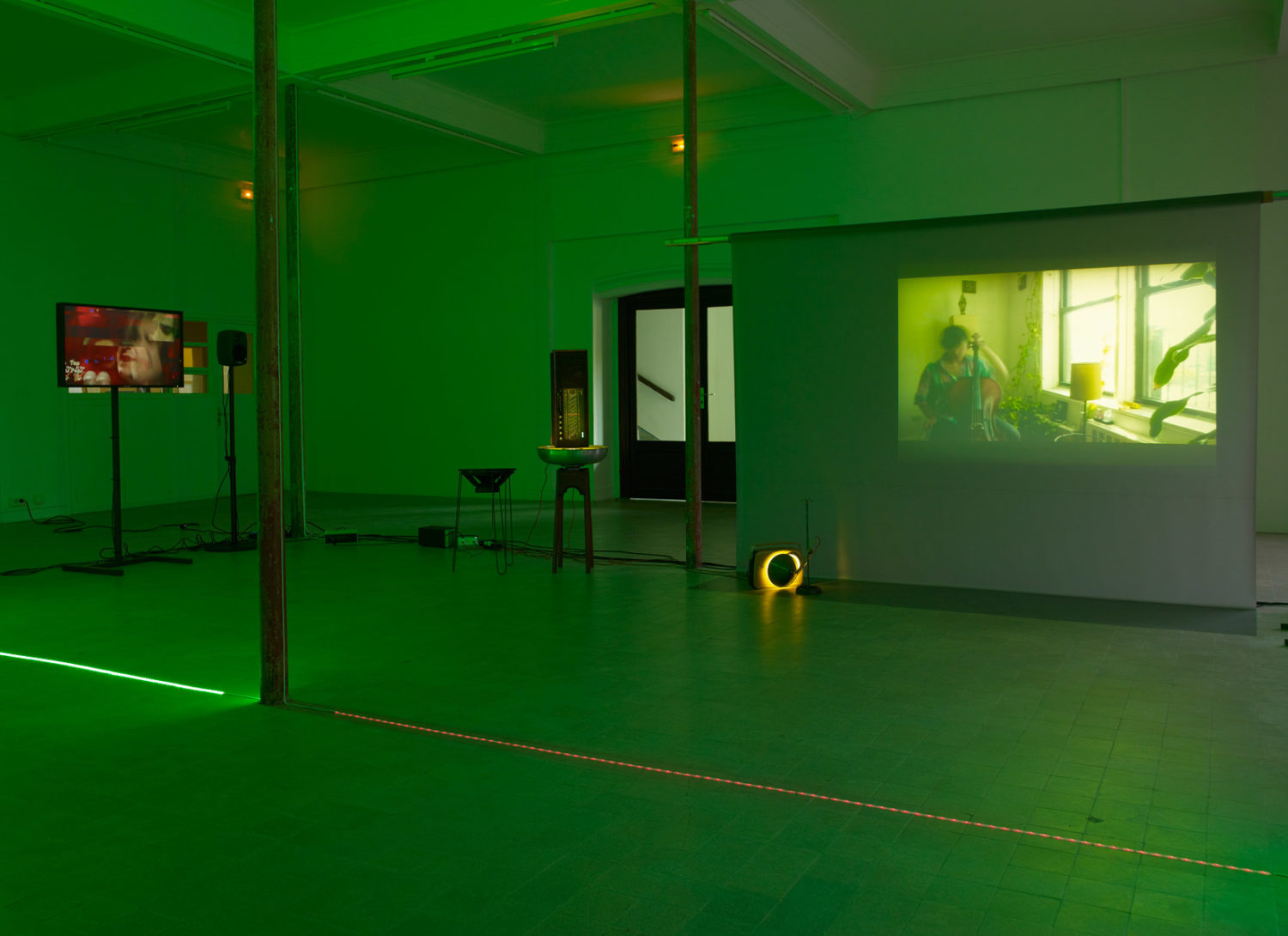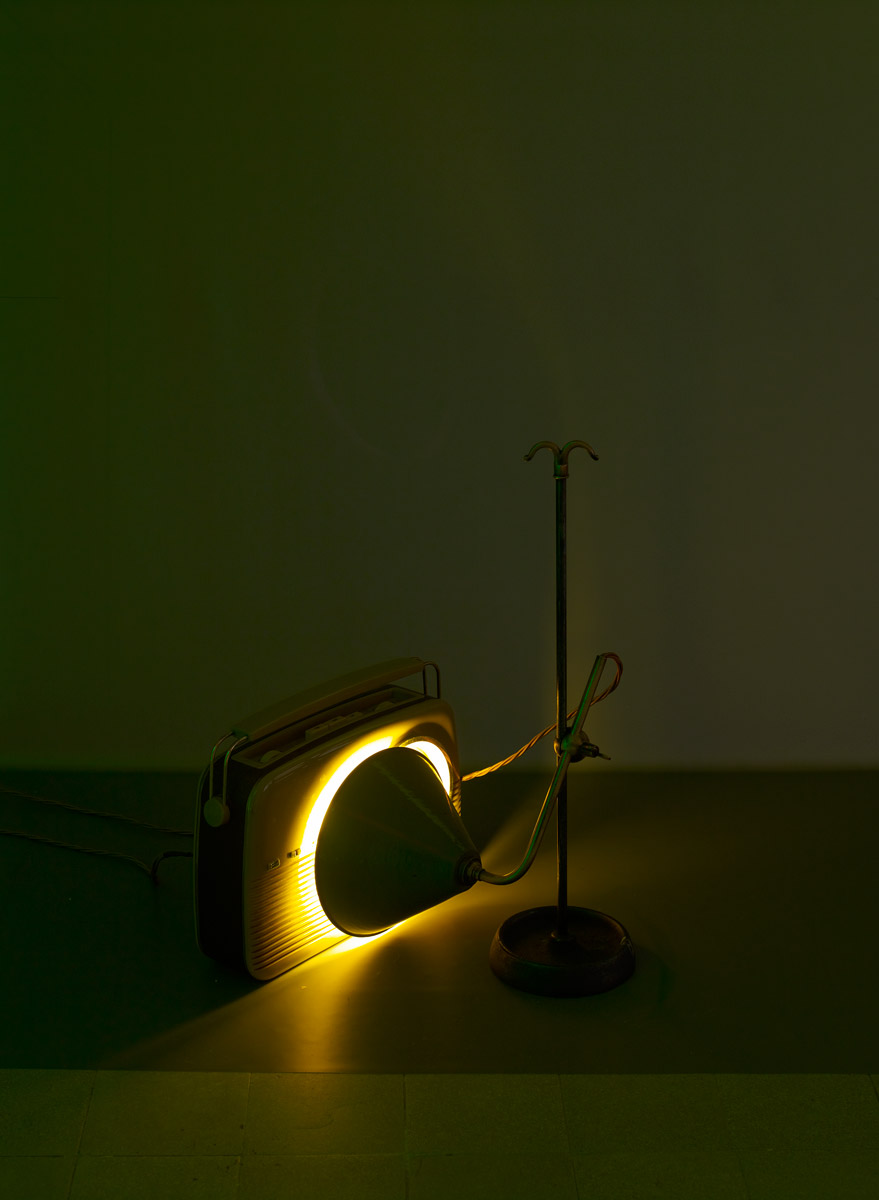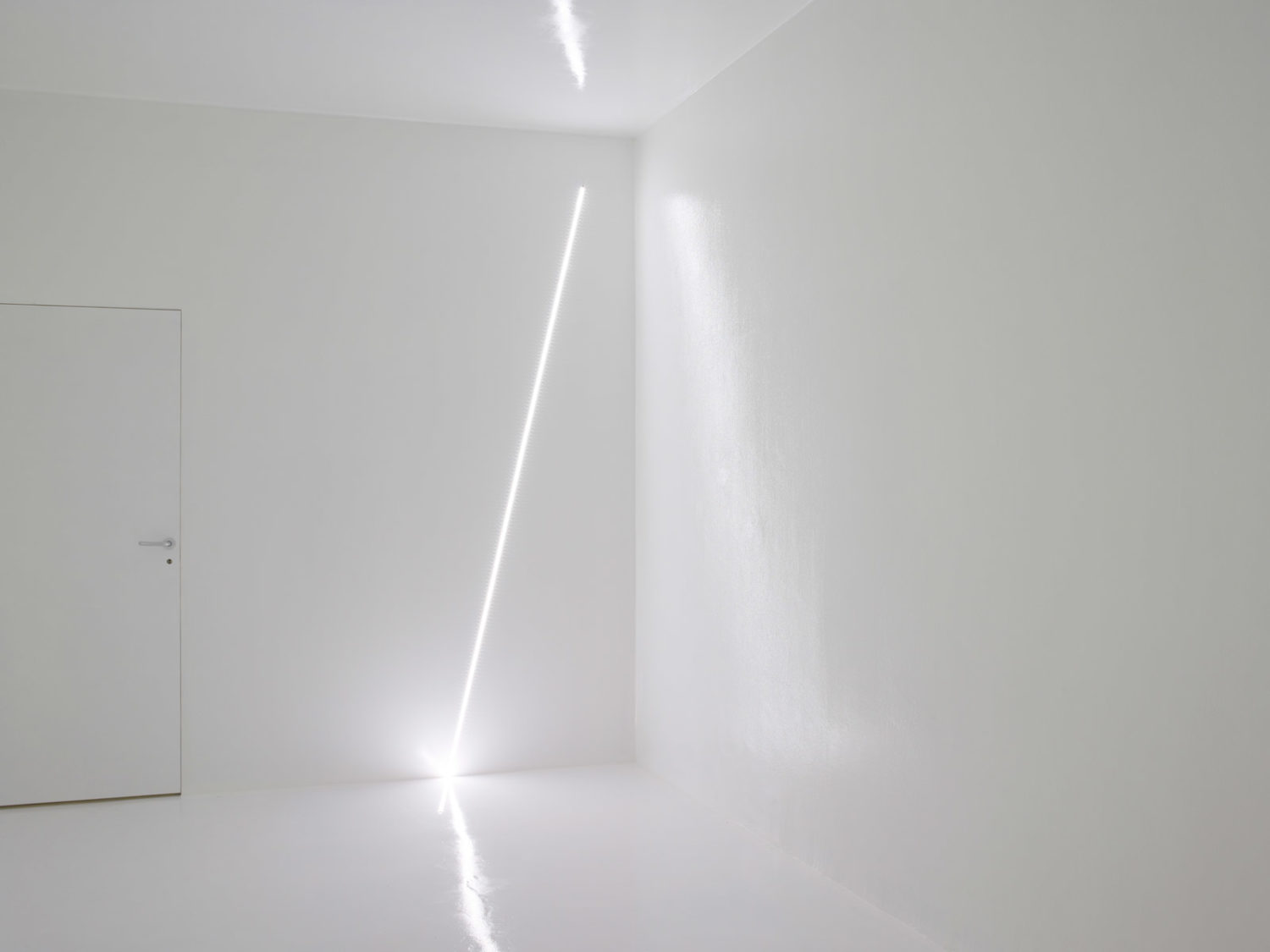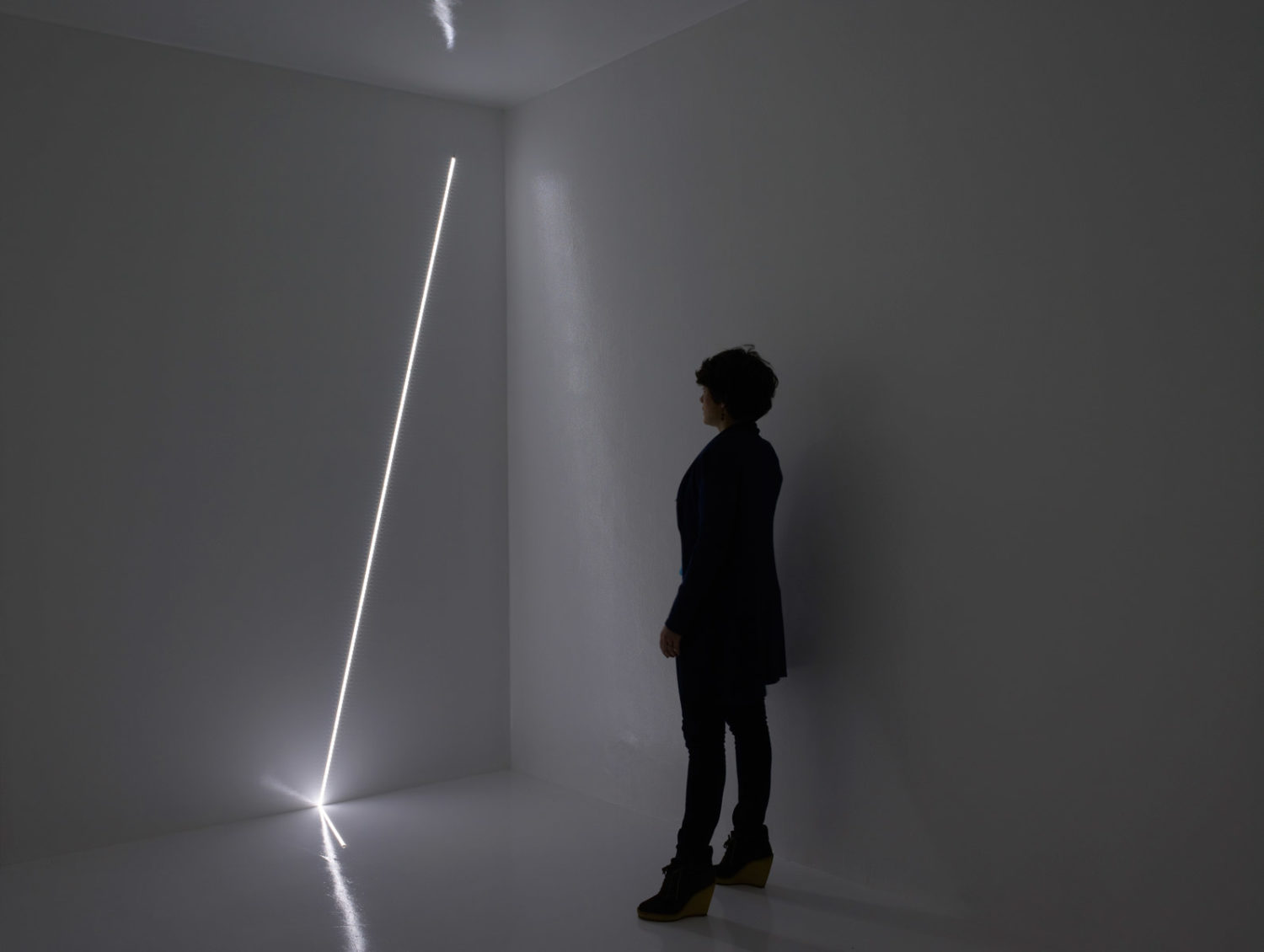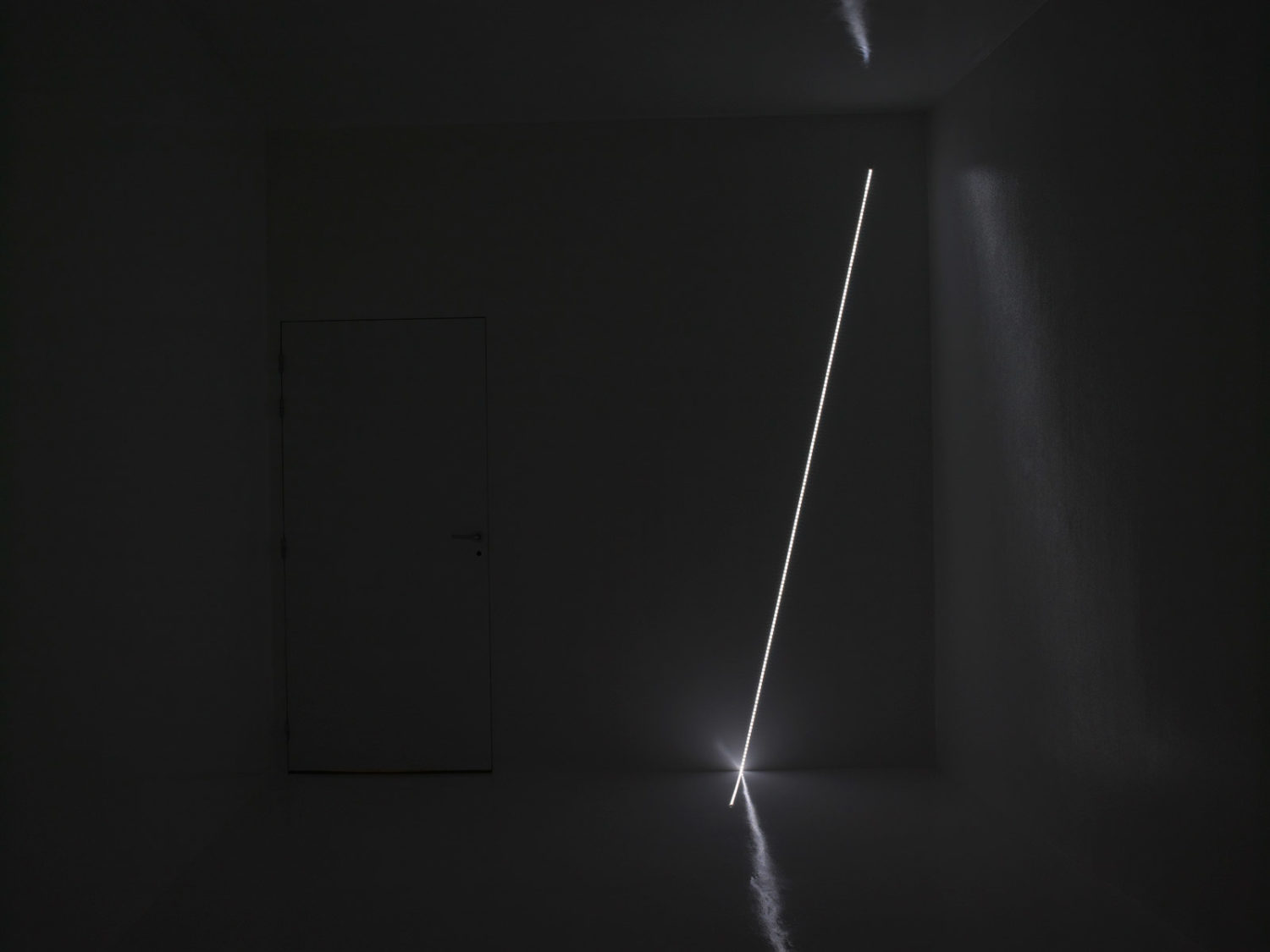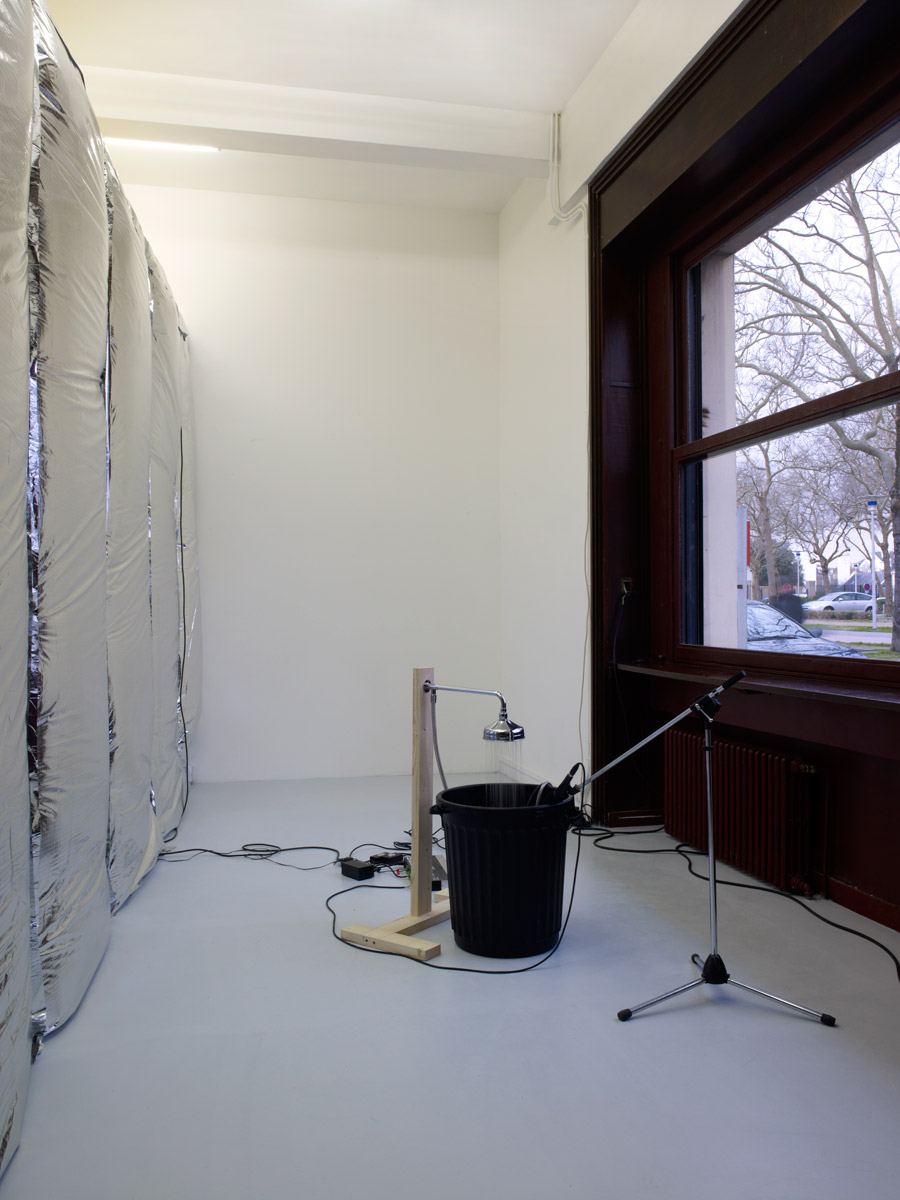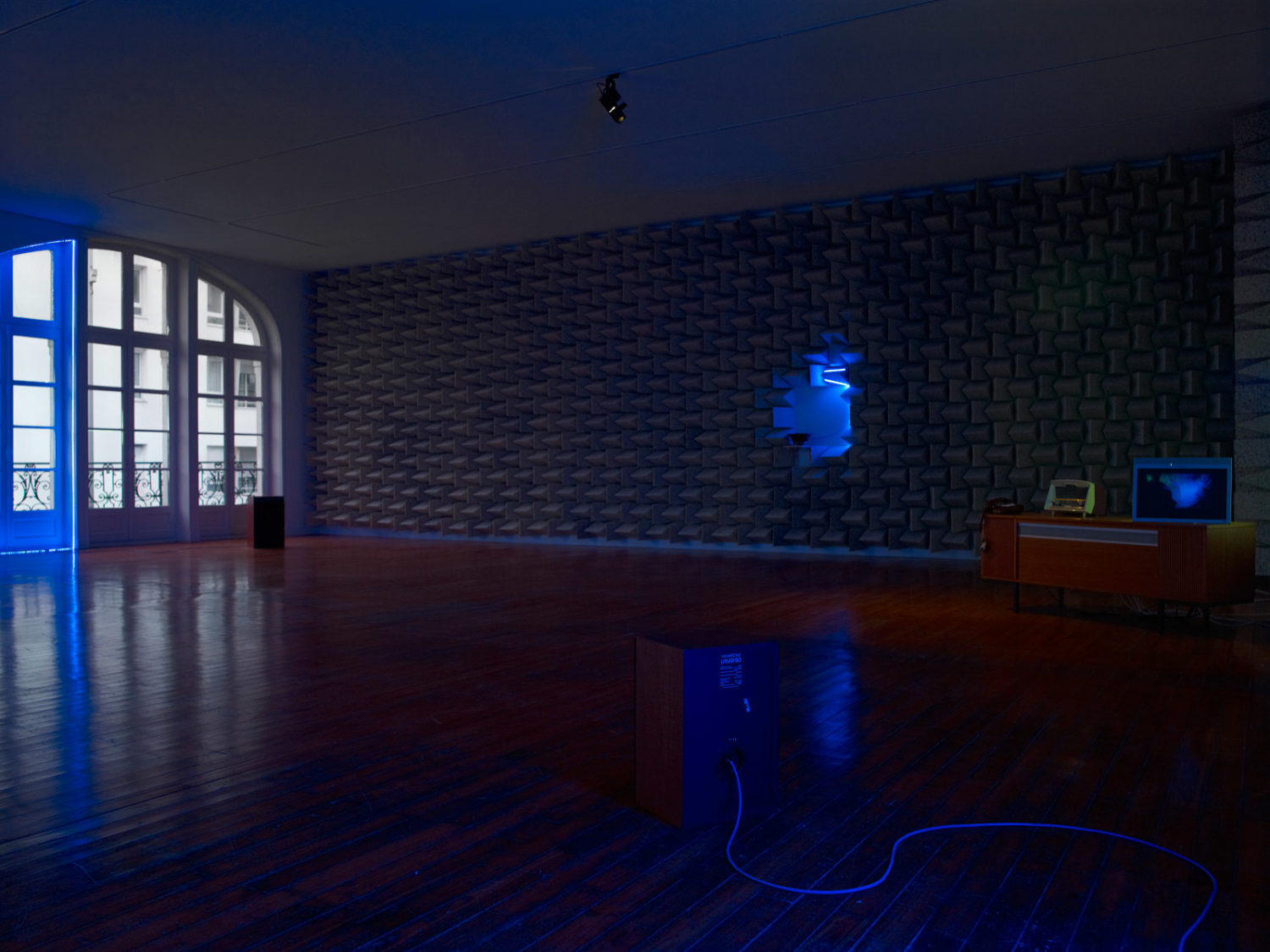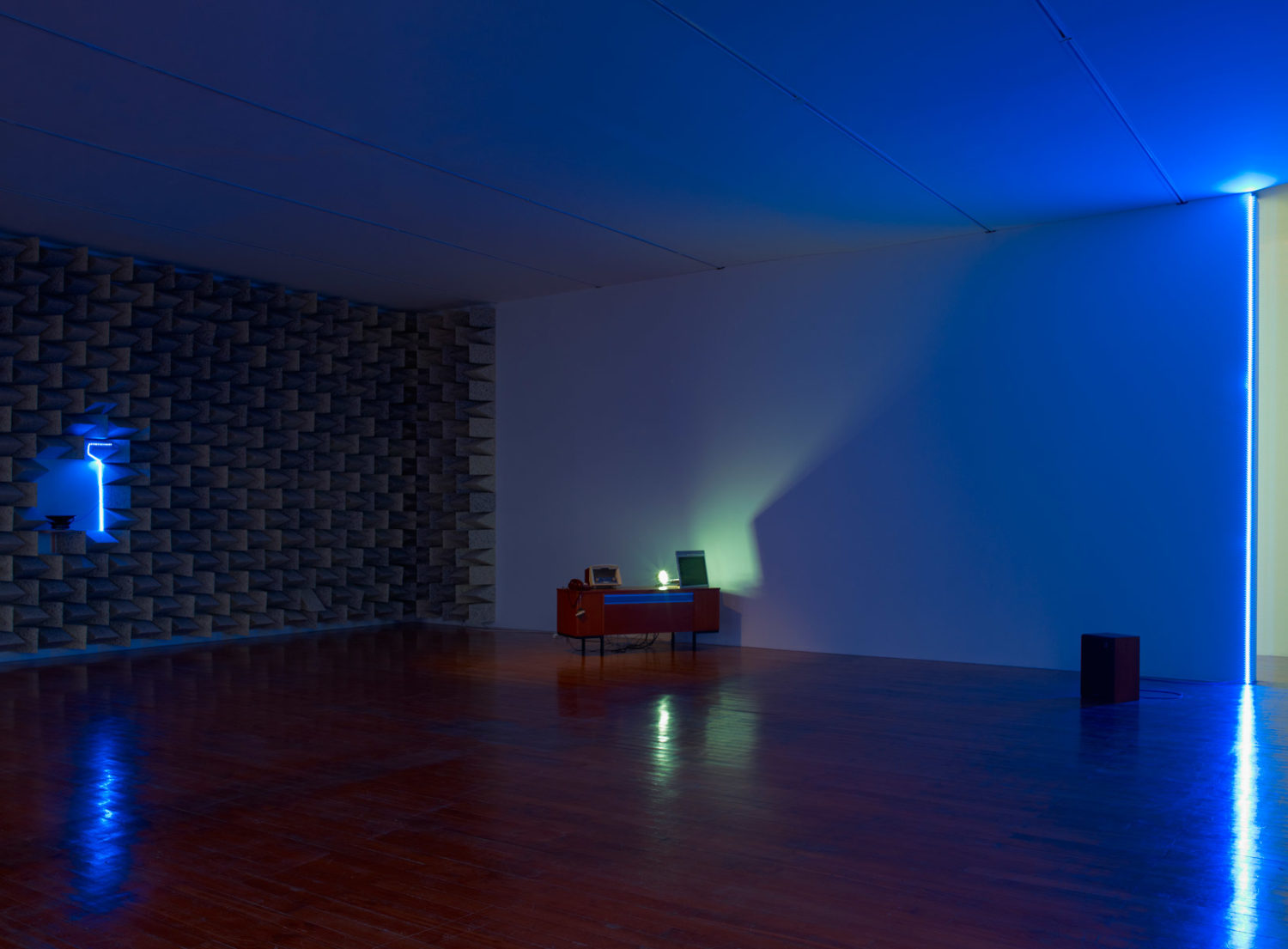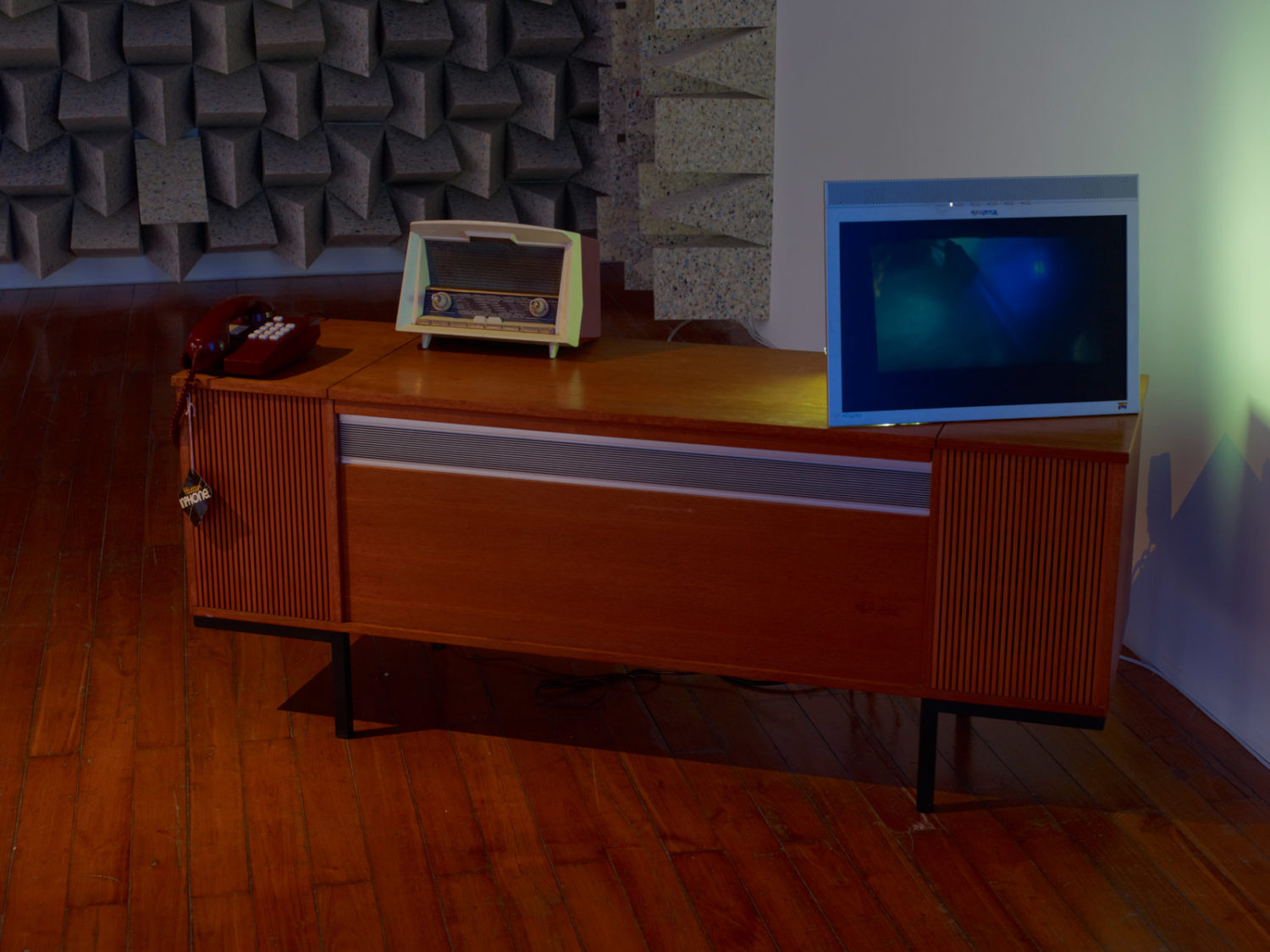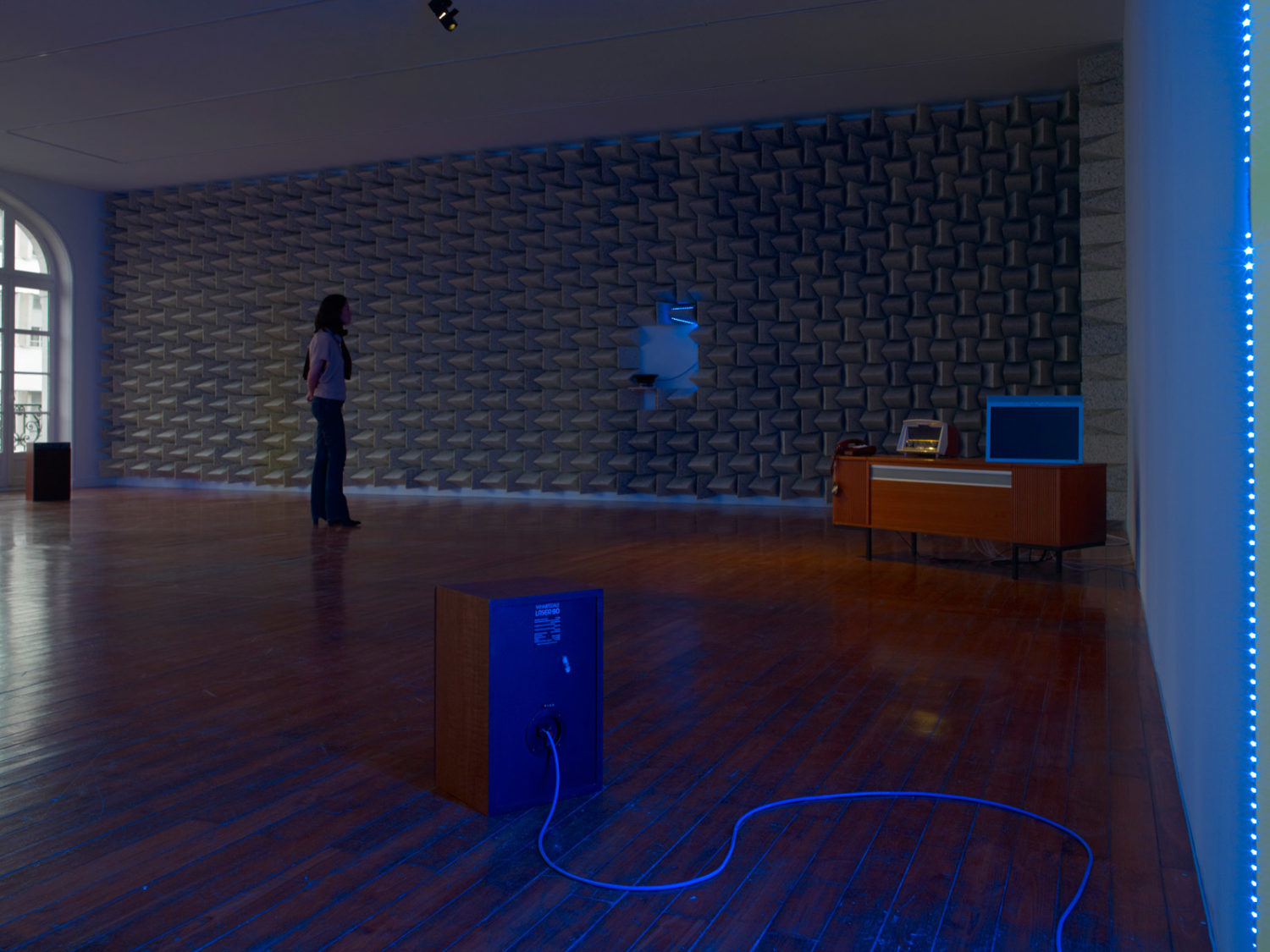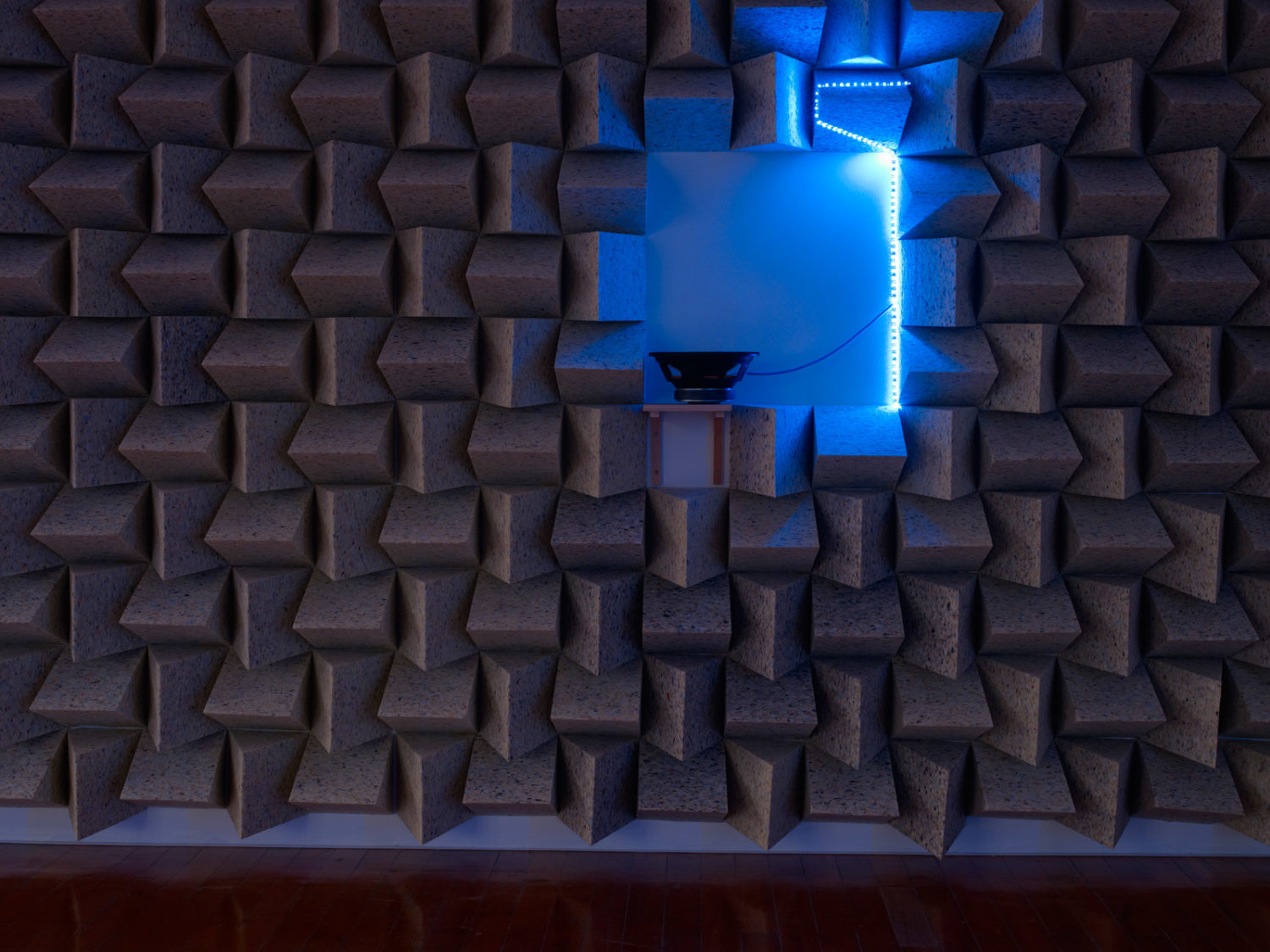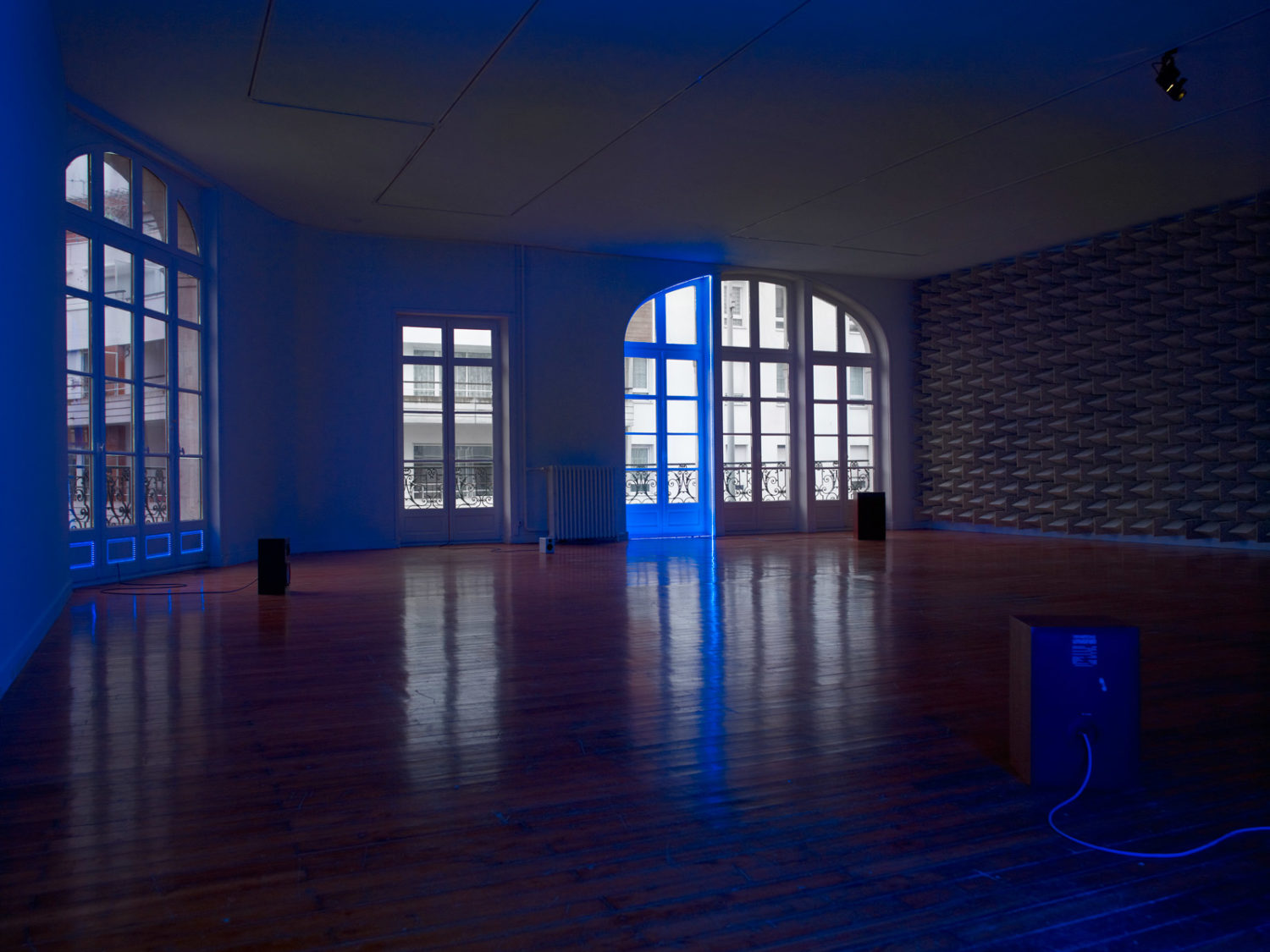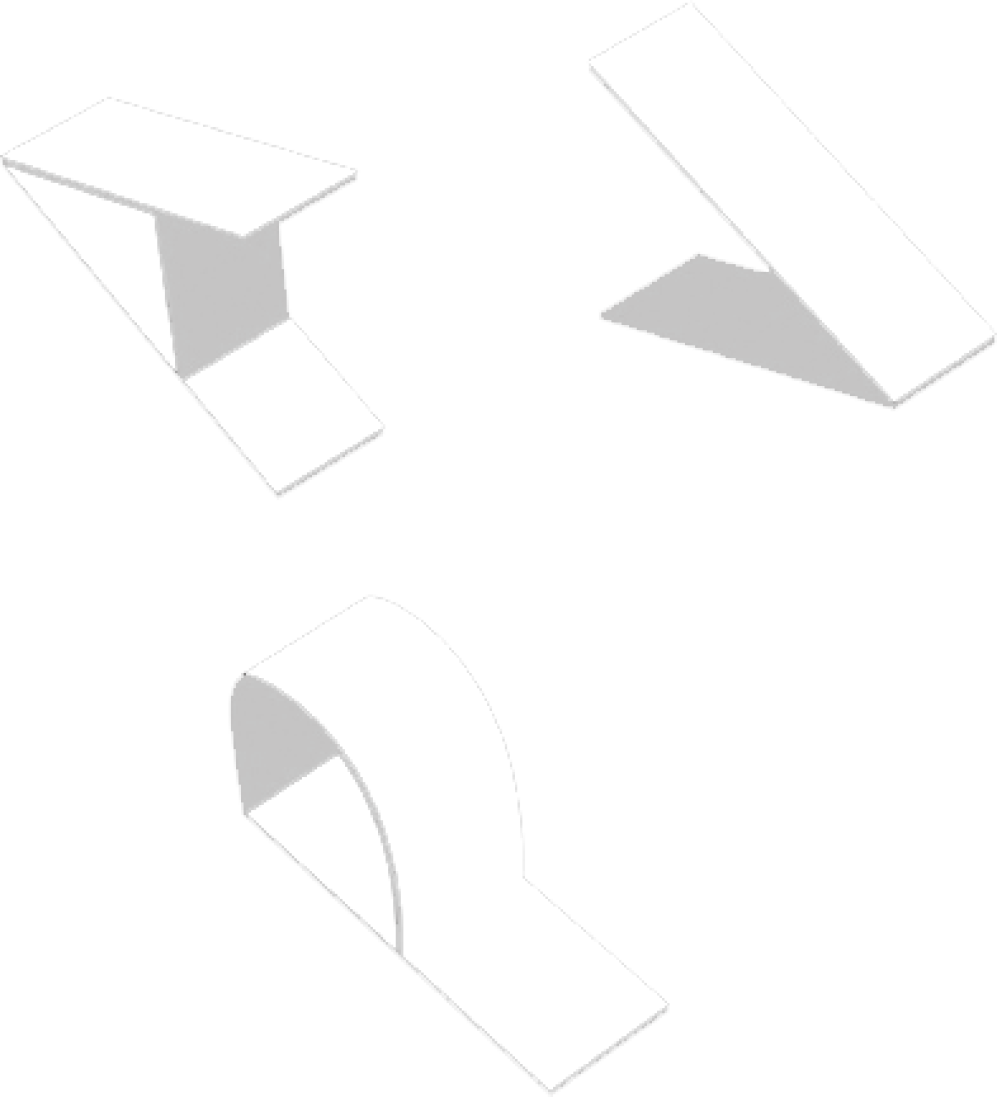Available documents
Exhibition
The leitmotif running through Haroon Mirza’s work is the revelation of the world’s latent sonic potential and the clarification of its reading, deployed in composite installations as sculpted spacial soundscapes. Drawing on the sociologist and philosopher Marshall McLuhan’s theories of communication and his writings on acoustic space, the artist contests the privilege accorded to visual space over sound material as the dominant principle of perception.
This universe of intermingled temporal layers is populated by numerous accessories: worn out everyday objects being used to produce image and sound, retro furniture, dissected analogue instruments; but also YouTube videos, blinding LEDs, and electronic equipment.
The elements are often repurposed: Haroon Mirza examines them, associates them, and liberates new functionalities. From his studies in design at Goldsmiths College in London he has retained a specific approach to the ‘prototype’ and has developed a critical sense regarding the correspondence between an object’s form and function. His sculptures develop out of mechanical structures generating aesthetic, visual, and sonic compositions that border on improvisation.
He particularly appears to track the moments of perceptual change, the slipping from hearing to listening where sound becomes music, as in the installation Cross Section of a Revolution (2011), where the interlacing of improvised music, political discourse, and sound sculpture opens up a new field of experience. Haroon Mirza’s work sometimes develops out of a collective process, and he also deliberately integrates the work of other creators. In his installations he uses fragments of pop music, passages of house and techno, or key pieces of contemporary experimental music in a procedure akin to the ‘guest appearance’.
Interference and loops -visual and sonic- recur frequently in the works, as if increasing the tension within spaces or amplified sounds; the meeting of searing images and singular objects form a synaesthetic whole with a powerful physical impact.
The artist also increasingly shows particular attention to architecture as a space of resonance, and as appropriate for proposing sense-experiments. The installation presented during the 54th Venice Biennale, The National Apavilion of Then and Now (2011), was a notable example, placing the visitor in a darkened soundproof space filled by a piercing, monotone and rhythmic electronic tone. “Nowadays, a total absence of noise and light still remains associated in the collective unconscious with an indiscernible form of fear. Without their most precious senses, spectators end up in an unusual and uncomfortable situation, forcing them to find within themselves the resources required to deal with the discomfort brought about by this relatively hostile environment1.”
In 2012, the Grand Café presented one of the artist’s videos, Adhãn (2009), an Arabic title designating the call to prayer and notably the call to collective prayer. Here, Haroon Mirza interrogates the role music plays in particular cultural and religious contexts. Having grown up in a non-Western culture, the artist explains that it was natural for him to look towards Islam in his reflection on the conditions of the cultural reception of sound.
For this new exhibition, the artist continues his consideration of the production and reception of “sounds that make images” in very diverse cultural contexts: The Calling (2013/14), an installation and performance initiated at the Atelier Calder and followed up in Edinburgh during the summer of 2013, will be further developed in Saint-Nazaire; Haroon Mirza continuing his study of the intangible but effective mechanisms hidden within some sound material, such as the call of the muezzin.
The study of autonomous and spatial sound is also at the heart of the other immersive installation presented in the exhibition: Pavilion for Optimisation (2013), that follows on from the Venice Biennale research. Architecture within architecture, a reverberation chamber offers an intense experience, closely articulating the visible and the audible to the point of sensorial disturbance.
A new work by the artist on the first floor of the art centre, Access Boot (2014) alludes to Saint-Nazaire’s military history, and to the past of the site itself as a café with a reception and dance rooms. Always attentive to the particular texture of a context, Haroon Mirza occupies this ‘found architecture’ and multiplies the references: it is partly inspired by the Wolfgang Petersen film Das Boot, which relates the story of the German submarine U-96 (Kriegsmarine) and its crew during the Second World War, and partly by Access, a 1990s Acid House single by DJ Misjah and Tim. The work is loaded with an undeniable political conscience, and reads like a vast sensory equation, shedding light on the specificities of the architecture opening onto the town.
Éva Prouteau
—
Note
1 – Extract of the text by Emeline Vincent, Haroon Mirza, LO-FI immersions, published in Volume n°5, 2012-2013
Production
Artworks
Sound installation
Haroon Mirza has produced The Calling in the frame of his residency at l'Atelier Calder in Sachén from june to july 2013. For this occasion, he has been supported by le Cnap (Centre national d'arts plastiques)
Courtesy Lisson Gallery, London
Courtesy Lisson Gallery, London
Biography
Born in London in 1977 where he lives and works.
The artist is represented by Lisson Gallery.
